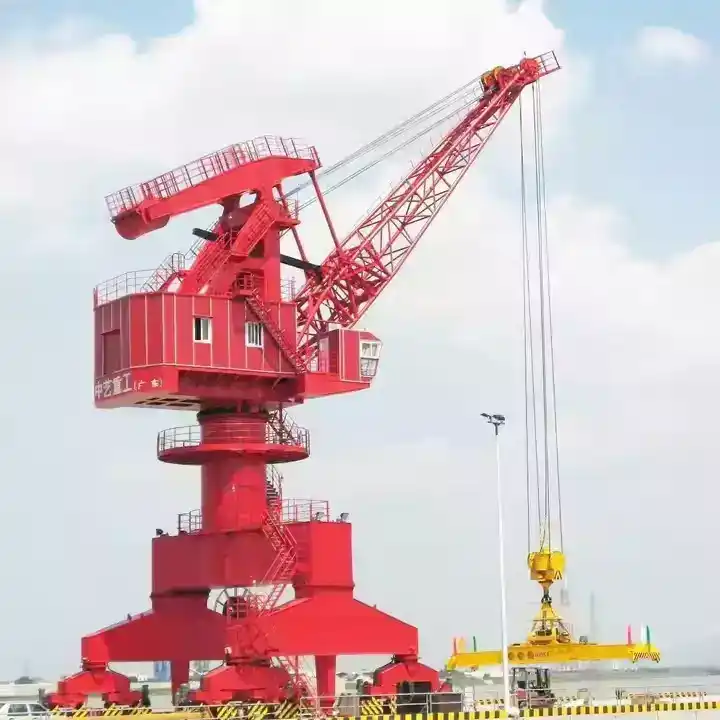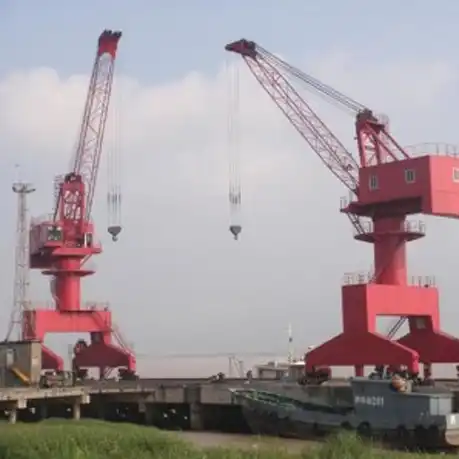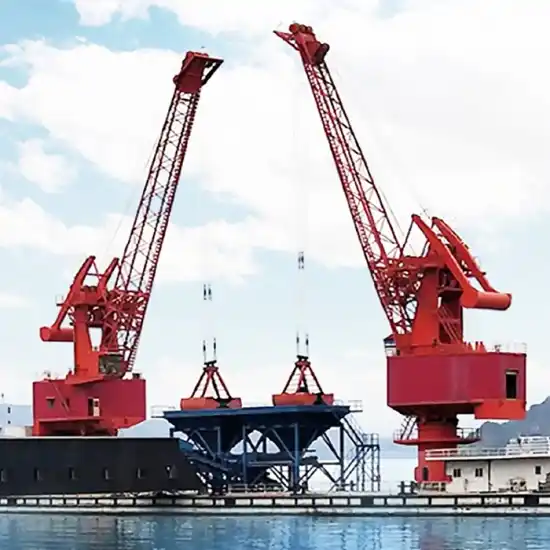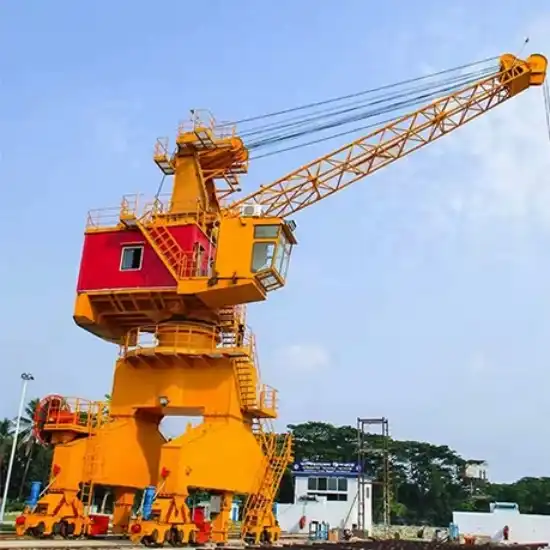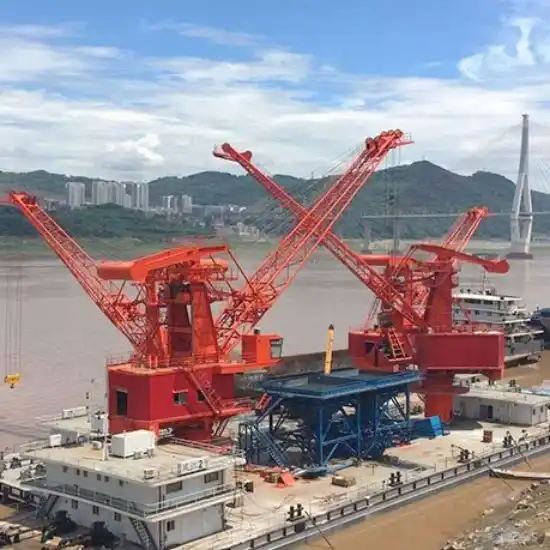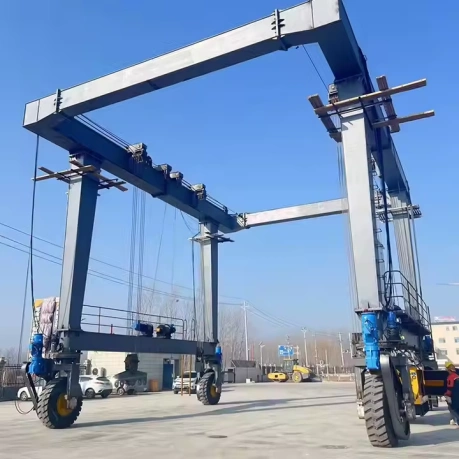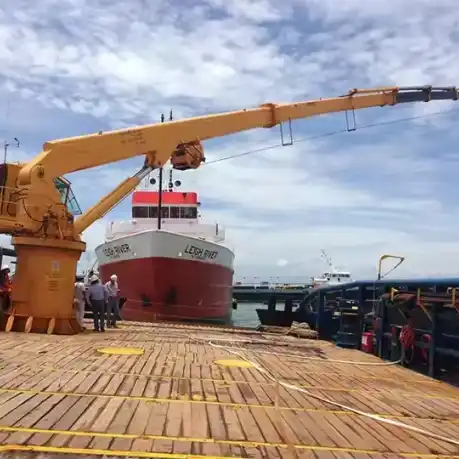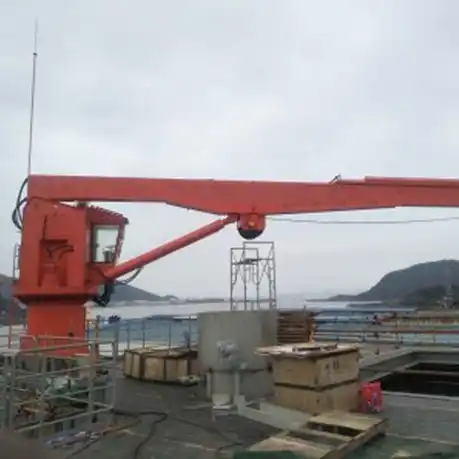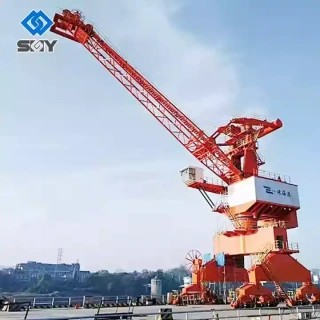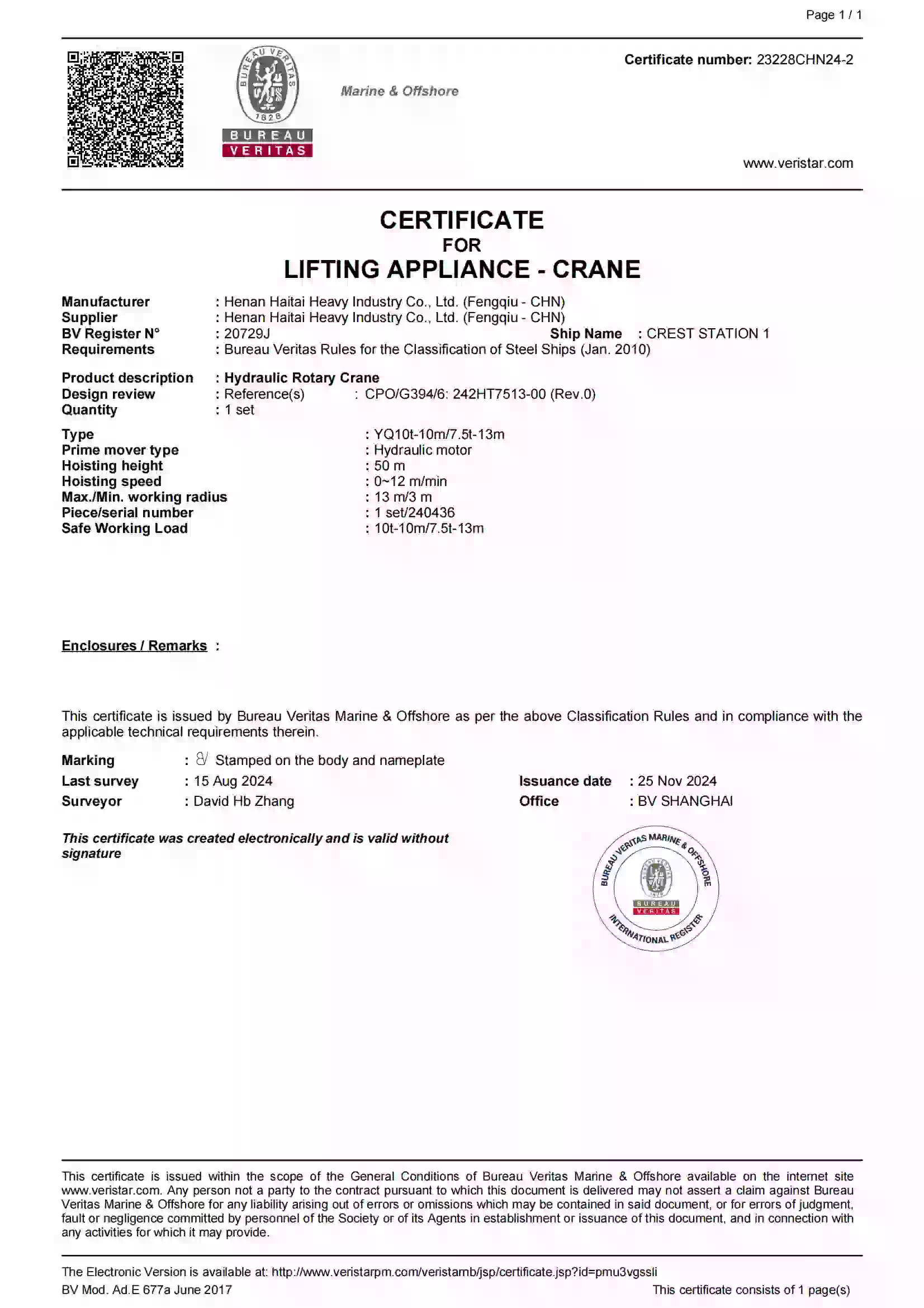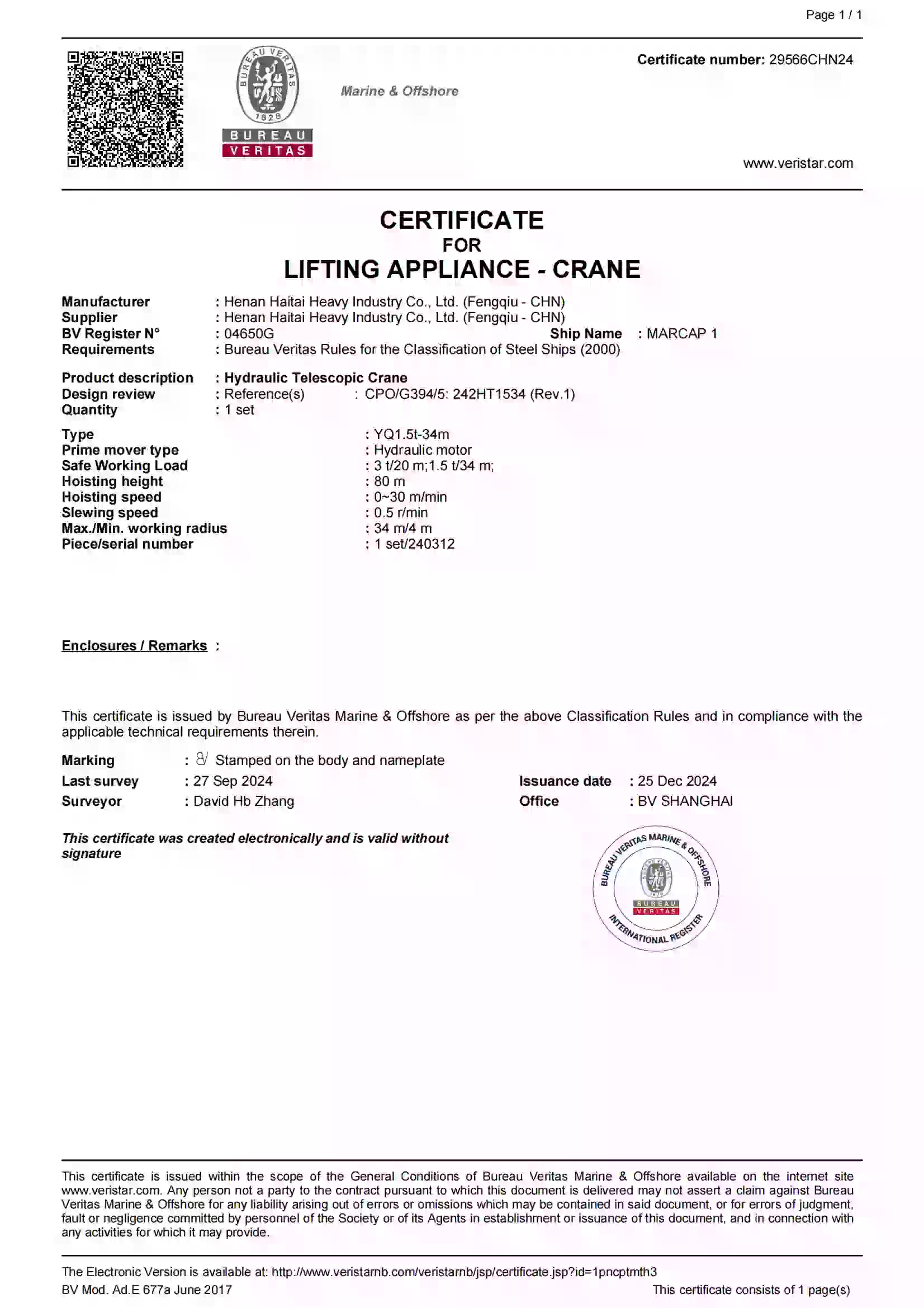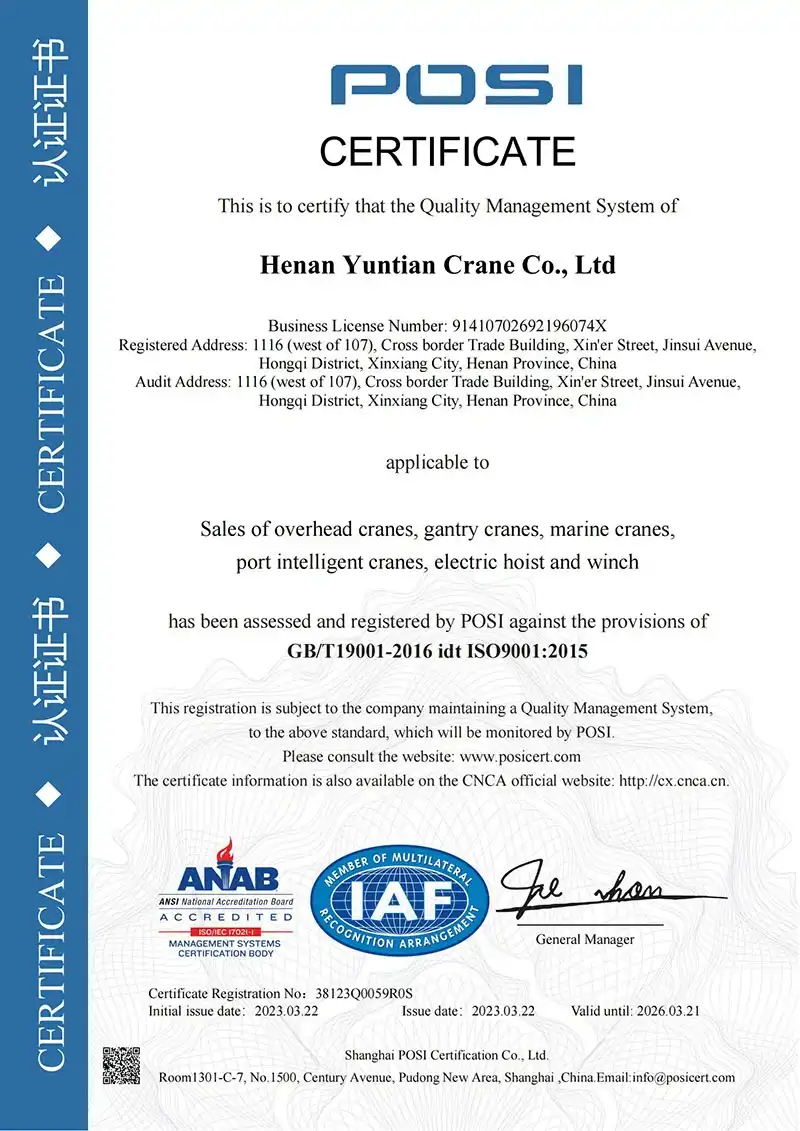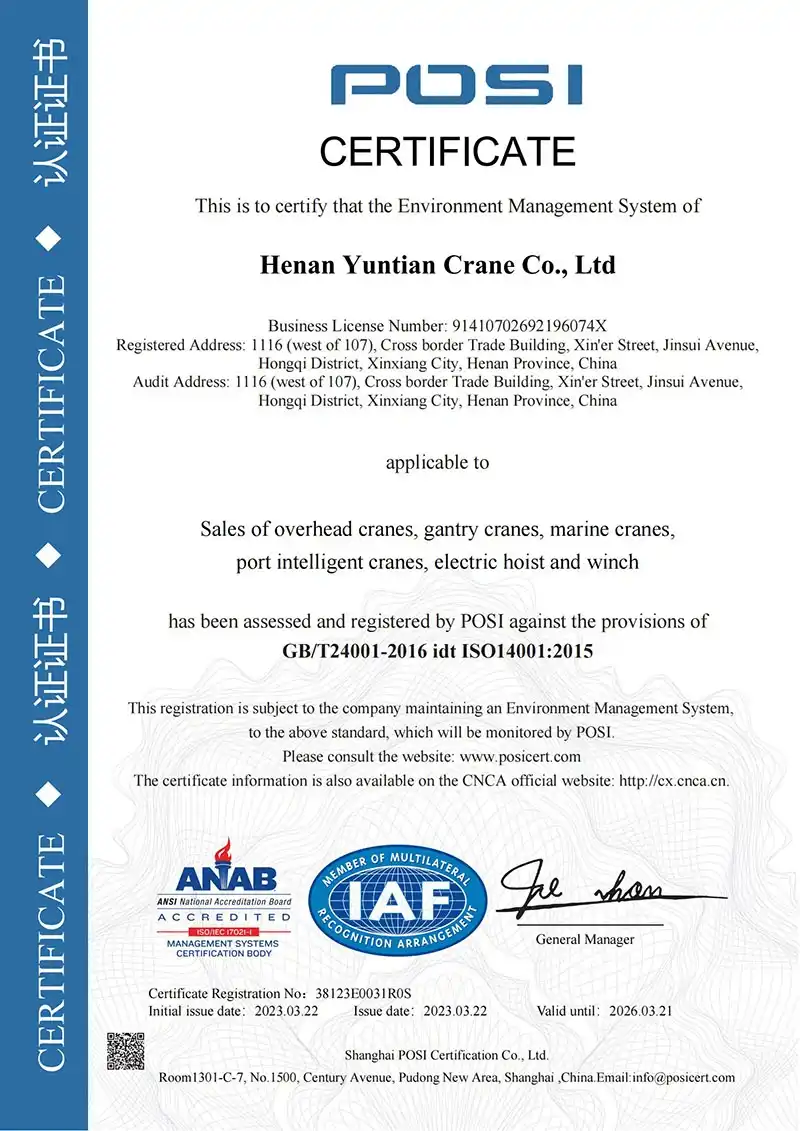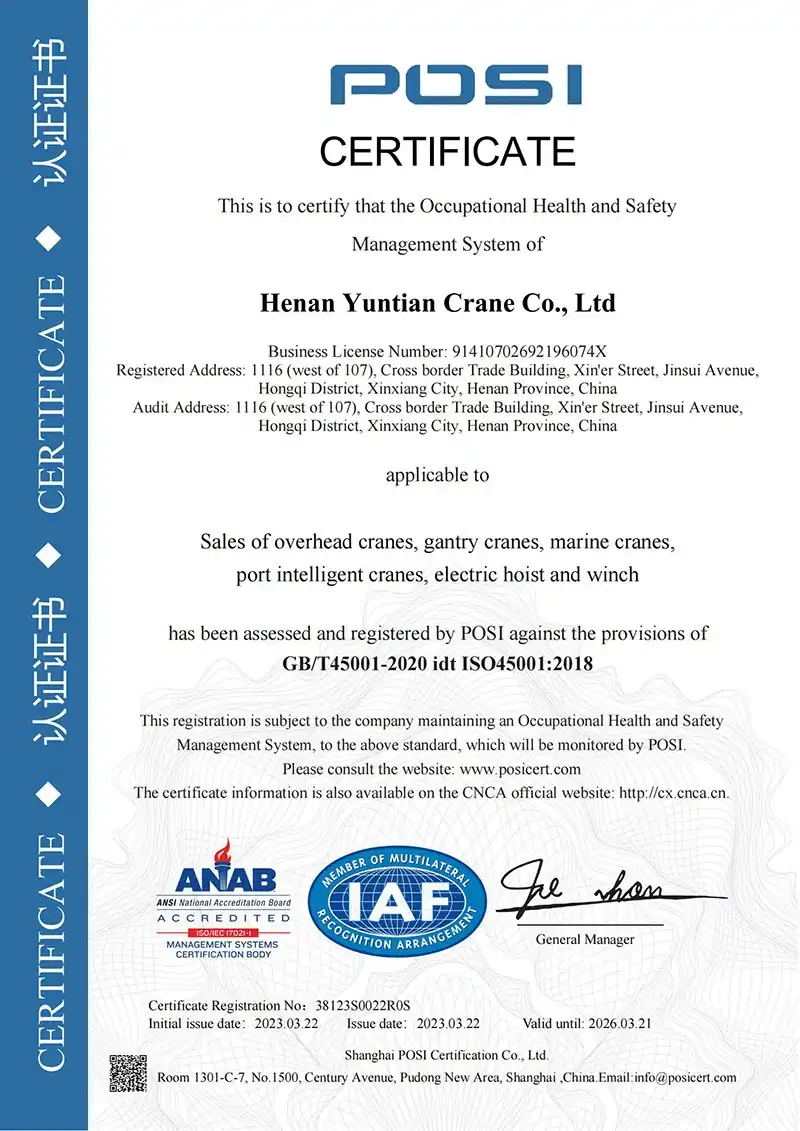





Floating Dock Crane: Main Benefits & Key Features
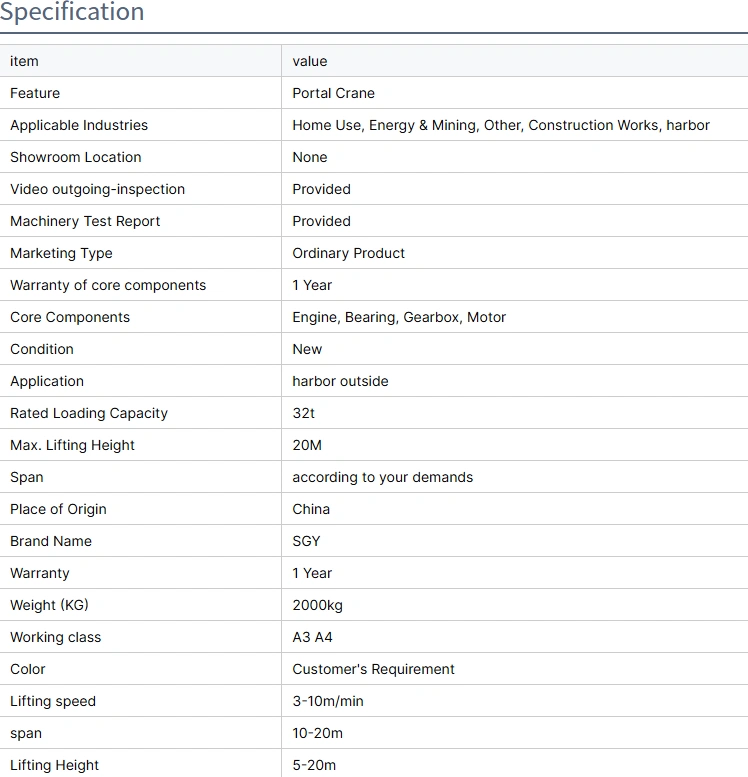
Suitable for Many Marine Tasks
Multiple Cranes Can Work Together: Several cranes can operate next to each other on one ship. This improves efficiency in busy ports or shipyards.
-
Works in Different Places: Perfect for ports, shipyards, hydroelectric stations, and other marine construction sites that need heavy lifting.
Smart Design for Better Performance
Rotating Column & Slewing System: Includes a rotating column attached to a vertical column or a rolling bearing slewing device. This reduces the tail swing radius for safer and more space-saving operation.
-
Compact Gantry Design: Takes up less space on the pier, so it can be used even in tight areas without losing stability.
Strong Systems for Heavy Loads
Full Motion Control: Has lifting, slewing, luffing, and traveling mechanisms for accurate load placement.
Tilt-Adjustable Boom: Booms can be single or combined and are pitch-flexible to improve range and adaptability.
-
Built-in Safety Systems: Includes load/moment limiters, rail clamps, and electrical protections for safe and reliable operation.
Extra Options for Higher Productivity
Optional Add-Ons: Supports telescopic funnels, belt conveyors, and grab buckets to handle bulk materials like coal or grain.
-
Comfortable Operator Cabin: The cab is designed for the driver, with good visibility all around for easy control.
Proven Quality & Long Life
Meets Global Standards: Made to follow DIN, FEM, IEC, AWS, and GB standards. Also has CE, ISO, and BV certifications.
-
Key Parts Warranty: 1-year warranty on important components like engine, bearing, gearbox, and motor.
Can Be Customized
Choice of Colors & Specs: Customized to customer needs, with lifting speeds from 3–10m/min.
-
Full Service Offered: Henan Yuntian Crane provides complete support from installation to commissioning.
By mobility: Some are self-propelled, but most are not and need to be towed to the work area.
By use:
Loading/unloading type: Mainly used in inland ports for handling bulk goods like coal and sand. They require high efficiency and usually have small lifting capacity. The crane is typically placed on a non-powered rectangular barge.
-
Heavy-lift type: Used for special tasks like lifting heavy, large, or deep-underwater objects.
-
By hull type: Includes semi-submersible (which can lower its deck underwater to load cargo like barges), ship-shaped, and barge-type.
Well-known floating cranes include Heerema Marine Contractors’ semi-submersible crane vessel "Thialf" with a lifting capacity of 14,200 tons and two full-rotation booms. Chinese floating cranes with over 1,000-ton capacity include Shanghai Salvage’s "Wei Li" (3,000 tons) and Guangzhou Salvage’s "Nan Tian Zhu" (1,000 tons). By crane system:
Fixed type: The boom cannot rotate horizontally. It usually has an A-frame made of two large poles (round or box-shaped). One end is connected to the deck, and the other is held by wires connected to a rear frame. Adjusting the wires changes the boom’s range. This is also called a derrick crane.
-
Rotating type: The crane is mounted on a turntable, and the boom rotates with it.
Why Pick Our Floating Dock Crane?
✅ Saves Space: Small ground footprint with large working range.
✅ Lifts Heavy Loads: Built for tough marine and industrial jobs.
✅ Safe & Dependable: Includes safety systems and certified parts.
✅ Globally Trusted: Comes from China’s "Crane Hometown" (covering 2/3 of local market), offering high quality at good prices.
Good for: Port logistics, offshore energy, shipbuilding, disaster recovery, and inland waterway operations.
This crane uses the same advanced technology found in mobile harbor cranes. It includes diesel-electric drive, various spreader options, strong lifting ability, fast operation, and easy maintenance. This ensures high efficiency and wide application.
Different types of port cranes are available, including floating dock cranes and gantry cranes. They are used for ship-to-ship and ship-to-shore operations. They work in ports, sheltered waters, rivers, coastal areas, and even the open sea.
A floating crane, also called a crane vessel, generally consists of a lower floating vessel and an upper structure installed on the deck. Its main lifting performance includes lifting weight, lifting height, and lifting span.
Gantry Crane: Often called a "gantry crane". It usually runs on ground tracks and uses a grab bucket or hook for loading/unloading. It handles bulk cargo like grain, sand, and packed goods.
Floating Crane: Often called a "floating crane". Inland ports often use non-self-propelled, medium or small-sized, electric-driven, full-rotation single-boom floating cranes installed on barges. They handle bulk cargo like coal and sand.
Floating Dock Crane: Main Uses
-
Port and Harbor Work
Move shipping containers in tight or shallow water areas where land cranes cannot go.
Handle loose materials like coal, grain, or ore using grab buckets. Conveyor systems are also available.
Help with ship repair by lifting heavy parts like engines or propellers. -
Shipbuilding and Repair
Place large ship sections such as hulls or decks accurately in dry docks.
Serve as a movable lifting tool for fixing ships offshore.
Move heavy machinery between the dock and the vessel. -
Offshore Energy Projects
Help build wind farms by lifting turbine parts like nacelles and blades.
Carry equipment and supplies to oil rigs.
Handle pipes and other materials for underwater construction. -
Construction and Infrastructure
Lift and install parts for bridges over water.
Help with dam construction by moving heavy materials.
Support the building of piers and docks in coastal areas. -
Emergency and Special Tasks
Help with disaster recovery, such as moving goods in flooded ports.
Support salvage operations like wreck removal.
Assist military logistics at naval bases. -
Inland Waterway Transport
Enable loading and unloading along rivers with no permanent cranes.
Work with barges to move goods on inland waterways.
Help maintain locks and dams.
Why Our Crane Is a Good Choice
✔ Moves on water – works in shallow areas or temporary sites where fixed cranes can’t.
✔ Lifts very heavy loads – suitable for containers, turbine parts, and more.
✔ Deploys quickly – ready for urgent tasks.
✔ Works in all weather – resistant to saltwater and harsh conditions.
Main Models: MQ1025 to MQ4035 (with single boom or four-link boom options).
A floating dock crane is lifting equipment installed on a floating platform. It is mainly used for loading/unloading goods and installing equipment over water. Below are its key applications:
-
Port Operations:
It can replace traditional shore cranes, especially in shallow water or ports without fixed docks. It works directly on a pontoon, adapts to tides, reduces the need for permanent infrastructure, and improves efficiency. -
Ship-to-Ship Transfer:
It moves goods like containers or bulk cargo between larger and smaller vessels near the coast or on rivers. Using a crane on a floating platform allows fast transfer and reduces port congestion. -
Marine Construction:
In projects like offshore platform building, ship repair, or bridge construction, this crane provides lifting support. Its floating feature offers flexibility in different sea conditions for installing equipment or lifting structures. -
Inland and Lake Transport:
It handles bulk goods (coal, ore) or general cargo on rivers and lakes. It is lightweight and space-saving, making it ideal for inland transport, especially where water levels change often. Emergency and Salvage Work:
In accidents or sinking incidents, the crane can be sent quickly to help with cargo recovery or ship righting, improving rescue efficiency.
Note: The efficiency and safety of the crane can be affected by sea conditions and tides. It needs a professional mooring system and stabilizers. Always choose the right model and plan based on actual needs.


